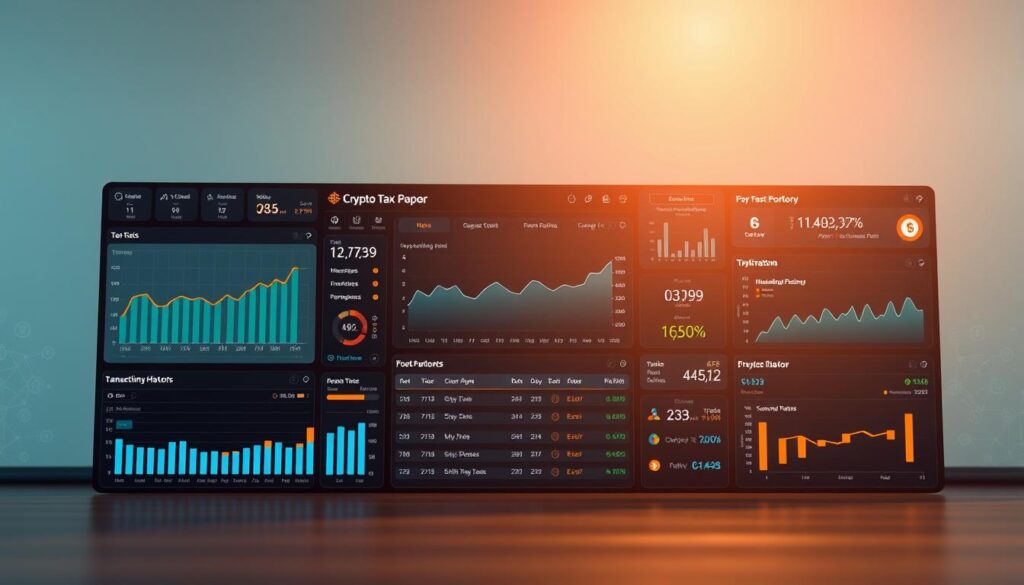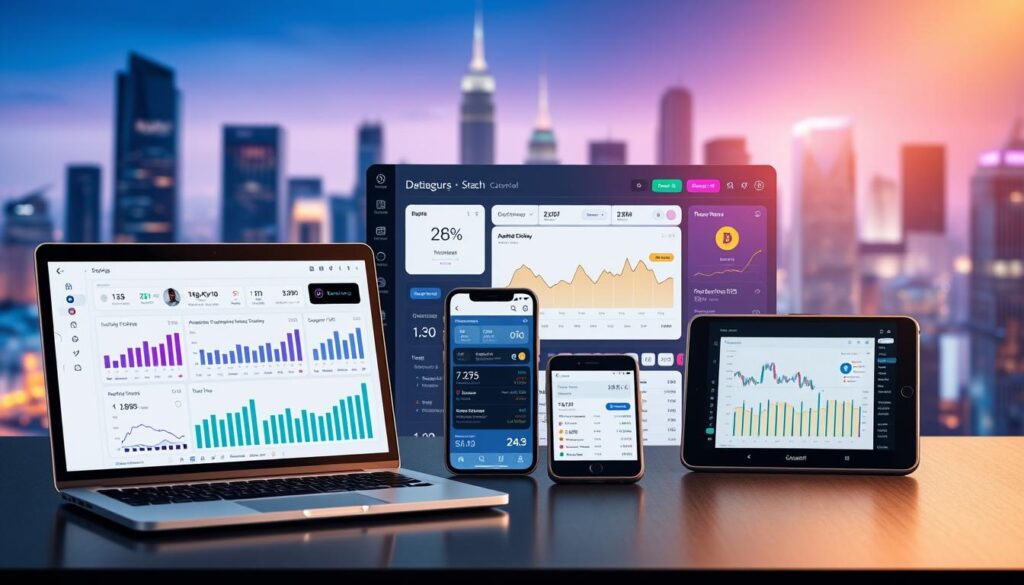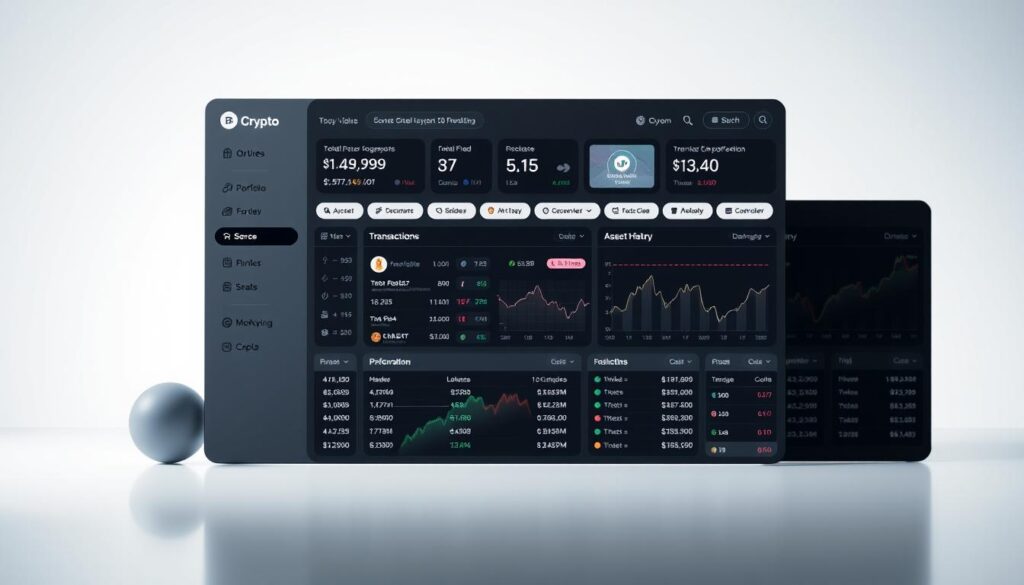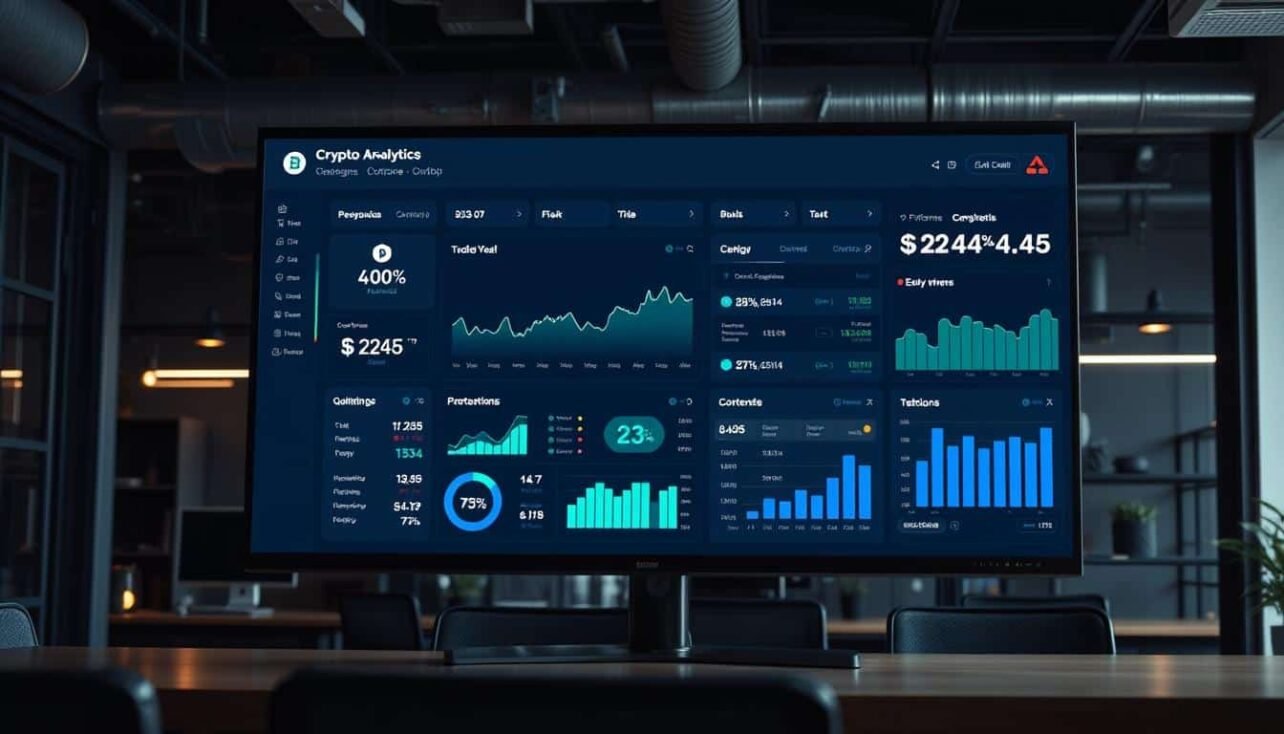The digital asset ecosystem continues expanding rapidly, with new trading platforms and decentralized financial tools emerging weekly. Investors now manage holdings across multiple blockchains, wallets, and exchanges – creating urgent demand for unified tracking solutions.
Modern tools aggregate information from diverse sources into single interfaces, offering real-time updates on asset values and market movements. This consolidation helps users spot trends faster while reducing manual data collection errors. Platforms now extend beyond basic price displays, incorporating risk evaluation metrics and strategic recommendations.
The evolution from simple trackers to intelligent systems reflects market maturity. Today’s solutions analyze historical patterns alongside live market feeds, helping investors make informed decisions. Features like automated tax reporting and cross-chain compatibility further enhance their utility for both casual traders and institutional players.
These advancements address critical challenges in managing decentralized assets. By centralizing fragmented information streams, users gain clearer visibility into their financial positions. Interactive visualizations simplify complex datasets, enabling quicker interpretation of market dynamics.
Key Takeaways
- Unified tracking systems solve challenges of managing assets across multiple platforms
- Advanced tools now offer predictive metrics alongside real-time value tracking
- Cross-chain compatibility has become essential for comprehensive oversight
- Visual data presentations help users interpret market changes efficiently
- Automated reporting features streamline tax preparation and compliance
Understanding the Rise of Crypto Portfolio Trackers
With hundreds of exchanges and wallets available, investors seek unified tools to monitor their holdings. Modern solutions bridge gaps between fragmented platforms, turning scattered data into actionable insights. This shift reflects growing demands for simplicity in an increasingly complex market.
From Spreadsheets to Smart Systems
Early adopters relied on manual spreadsheets to track digital assets. This method became impractical as decentralized networks multiplied. Today’s automated tools connect to 500+ exchanges and wallets, updating values in real time.
| Feature | Manual Tracking | Automated Trackers |
|---|---|---|
| Data Sources | Single platform | Cross-chain support |
| Currency Conversion | Manual calculations | Auto-fiat displays |
| Compliance | Error-prone records | Tax-ready reports |
| Update Frequency | Hourly/daily | Live updates |
Forces Shaping Modern Solutions
Three key factors drive tracker adoption:
- DeFi expansion: Yield farming and staking require specialized monitoring
- Regulatory demands: Automated audit trails simplify compliance
- Multi-chain ecosystems: Tools must aggregate data across networks
These systems now serve 43% of U.S. investors, up from 12% in 2020. Their ability to convert holdings into dollars or euros helps users grasp true portfolio value instantly.
Exploring the Crypto Portfolio Performance Analytics Dashboard: Tools and Features
Modern platforms transform scattered financial data into clear insights through smart connectivity. These systems eliminate manual work by linking directly to trading accounts and storage solutions, creating unified views of digital holdings.

Seamless Connections Across Platforms
Leading software supports instant links to 500+ exchanges like Binance and decentralized networks. CoinLedger demonstrates this with automatic imports from Coinbase and MetaMask, serving half a million users. Real-time API syncs ensure values stay updated across all connected wallets and trading accounts.
Multi-chain compatibility handles assets from Bitcoin to newer tokens. This eliminates blind spots in holdings across different blockchains. Security remains paramount, with local data storage and bank-grade encryption protecting sensitive information.
Simplifying Regulatory Responsibilities
Tax season becomes manageable as platforms generate IRS-ready reports. Automated calculations track capital gains, losses, and income streams across jurisdictions. CoinStats’ free tier processes 1,000 transactions, while paid plans handle complex portfolios.
These tools identify tax-saving opportunities through loss harvesting strategies. Customizable export formats meet requirements for accountants or government filings. By automating compliance workflows, investors avoid penalties and save dozens of hours annually.
Top Platforms and Their Unique Offerings
Investment management tools now cater to diverse needs through specialized features. Let’s examine market leaders helping users optimize their strategies across blockchains and asset classes.
CoinLedger and Its Comprehensive Capabilities
Trusted by 500,000+ investors, CoinLedger simplifies tax reporting while tracking holdings. Its free tier connects to major exchanges and wallets, automatically calculating capital gains. Premium features identify tax-saving opportunities through loss harvesting algorithms.

Comparing Market Leaders
Platforms differentiate through targeted solutions. CoinStats attracts 1M+ users with free DeFi integrations, while Delta combines crypto, stocks, and NFT tracking. Budget-focused options like CoinMarketCap offer manual entry for casual investors.
| Platform | Free Tier | Standout Feature | Pricing |
|---|---|---|---|
| CoinLedger | Unlimited tracking | Tax optimization tools | Free + paid reports |
| CoinStats | 10 wallets | Built-in DeFi wallet | Freemium |
| Delta | Basic analytics | Multi-asset support | $90/year |
| Kubera | None | Real estate tracking | $150/year |
When choosing tools, consider your asset mix and reporting needs. Those needing to compare leading portfolio trackers should evaluate security protocols and update frequency alongside core features.
User Experience and Interface in Crypto Dashboards
Digital asset management tools succeed when users can navigate them effortlessly. Leading platforms prioritize clean layouts and logical workflows, turning intricate financial data into approachable insights. This focus on accessibility helps both casual investors and seasoned traders interact with their holdings confidently.

Sleek Designs for Seamless Navigation
CoinLedger demonstrates this philosophy with its Trustpilot-leading interface. Simple menus guide users from portfolio overviews to tax reports in three clicks. Mobile apps from Delta and CryptoCompare mirror desktop functionality, ensuring real-time tracking whether users check holdings at home or on-the-go.
Customization elevates these tools further. Investors choose which metrics dominate their screens – from percentage gains to asset allocation charts. Alert systems notify traders about price thresholds or unusual activity without overwhelming them with data.
Security remains invisible yet robust. Crypto Pro stores information locally using Apple’s Secure Enclave, letting Apple users sync across devices without cloud vulnerabilities. Such implementations balance convenience with protection, addressing growing privacy concerns.
For those designing their own tracking systems, these examples highlight essential principles. Clear visual hierarchies and responsive controls keep users engaged while handling complex calculations behind the scenes.
Integrating Multiple Assets and Blockchains
As digital investments diversify across networks, tracking tools must adapt to handle complex ecosystems. Modern systems eliminate fragmented oversight by connecting exchanges, wallets, and blockchains through unified interfaces.

Cross-Exchange and Multi-Wallet Compatibility
Leading trackers now support direct links to 400+ exchanges and storage solutions. CoinStats syncs with Binance and Uniswap simultaneously, while Delta aggregates data from MetaMask and Ledger devices. This interoperability lets users monitor holdings across centralized and decentralized platforms without manual input.
| Tracker | Exchange Connections | Wallet Support | Blockchains |
|---|---|---|---|
| CoinStats | 300+ CEX/DEX | 45+ software/hardware | EVM, Solana, BSC |
| Delta | 40 major platforms | MetaMask, Trezor | Bitcoin, Ethereum |
| Step Finance | Solana DEXs | Phantom, Solflare | Solana only |
Managing Diverse Cryptocurrency Holdings
Handling varied assets – from Bitcoin to meme coins – requires flexible tools. Systems automatically categorize tokens by type (stablecoins, NFTs) and update values every 30 seconds. Step Finance’s dashboard shows Solana-based holdings alongside Ethereum DeFi positions, simplifying cross-chain analysis.
DeFi activities like staking get special attention. Platforms track liquidity pool shares and yield farming rewards across protocols. For those using multiple crypto portfolio management tools, unified dashboards prevent oversight of lesser-known assets or niche networks.
Data-Driven Insights and Analytics for Crypto Investors
Smart investors leverage detailed metrics to navigate volatile markets effectively. Modern platforms convert raw numbers into strategic advantages through automated analysis and visual storytelling. These systems answer critical questions about when to adjust positions or lock in profits.
Real-Time Market Analysis and Trading Metrics
Live market feeds track price swings across 500+ exchanges, updating every 30 seconds. API connections merge this data with wallet balances and DeFi yields. CoinLedger users spot tax-saving opportunities instantly – one feature recovered $4,200 average savings in 2023 case studies.
Visualizing Gains, Losses, and Performance Trends
Interactive charts reveal patterns in asset growth and decline across custom timeframes. Color-coded graphs separate top performers from underachieving holdings. Geographic breakdowns show regional exposure risks, while exchange statistics highlight preferred trading venues.
These tools transform complex information into clear roadmaps for action. Investors now make decisions backed by historical patterns and predictive models rather than guesswork.


No comments yet